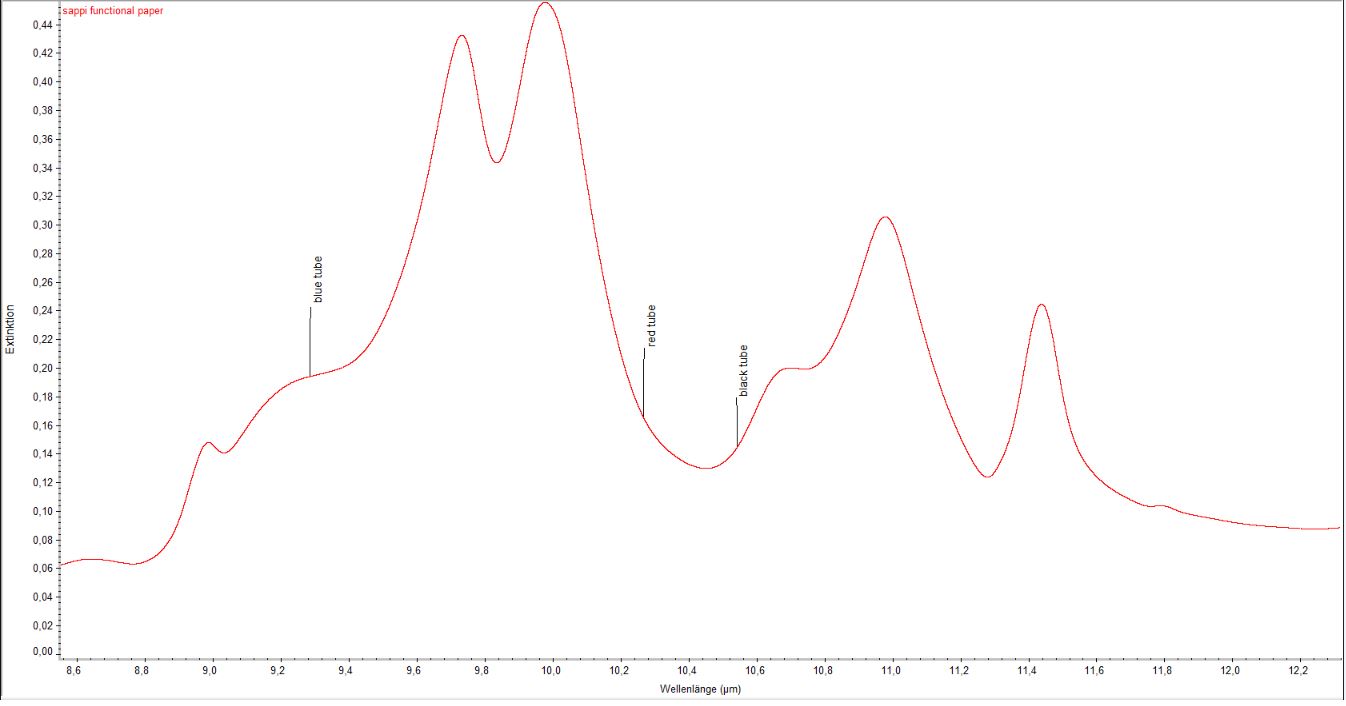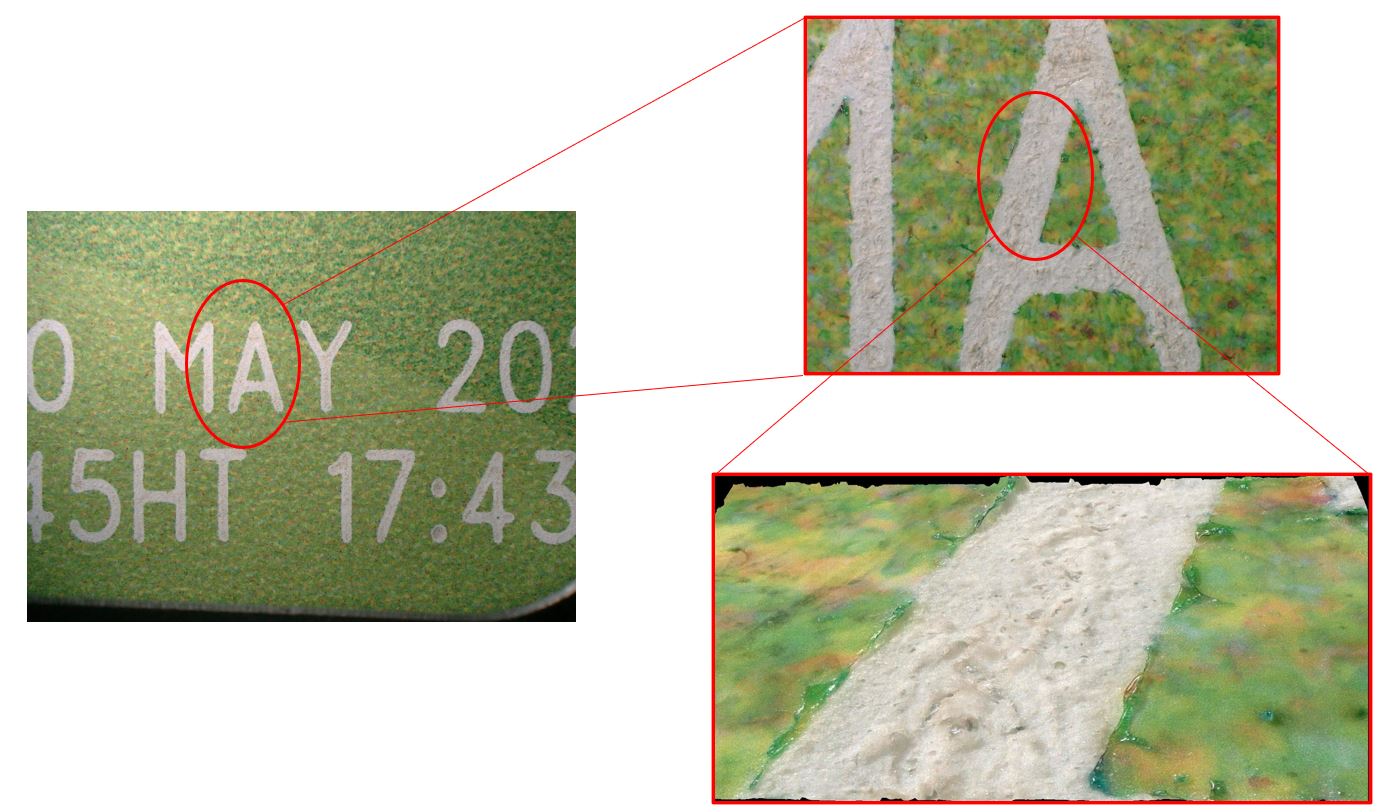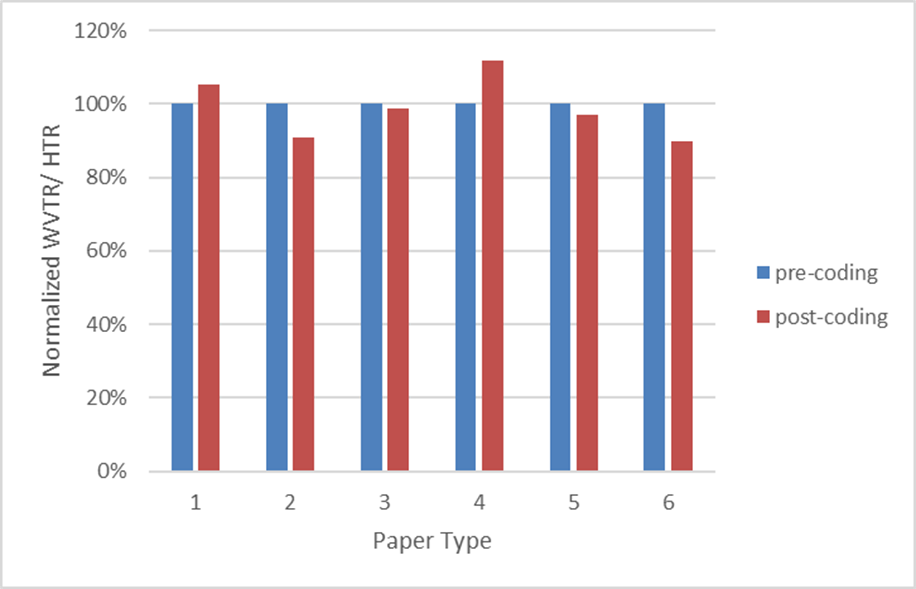Overview
Sappi is a global provider of fibre-based products, including flexible paper packaging with integrated heat-sealing properties and barriers against oxygen, water vapour, grease, aroma, and mineral oil.
Sappi realised the appeal of laser coding for global food brands requiring high-quality codes on barrier paper packaging and sought to collaborate with Domino Printing Sciences (Domino) to determine the ideal coding solution.
Domino’s D-Series laser coders were used to code a range of six different Sappi products and, in all cases, achieved a clean, crisp code without affecting the barrier properties.
Fast Facts
- Sappi is a market leader in barrier papers for flexible packaging.
- The company started developing innovative packaging solutions in 2013 and has completed more than 100 projects in applications, including tea, chocolate, cereals, and tobacco.
- Sappi’s barrier papers are fully recyclable and designed to meet upcoming regulations on recyclable packaging, including EU commitments to make all packaging recyclable or reusable by 2030.
- Sappi’s paper products are derived from wood pulp from responsibly managed FSC and PEFC-certified plantations within 100km of manufacturing plants.
Project background
Sappi has developed a range of barrier papers to replace conventional, unrecyclable multi-material plastic composites. The product range includes water-based barrier coatings for protection against moisture, oxygen, aroma, grease, and mineral oil.
“Our packaging materials have been developed to suit a range of customer requirements,” says Mike Zywietz, Product Application Engineer, Sappi. “When developing a new innovative packaging solution for our customers, we first study the product demands and the current packaging material and select one or two barrier papers out of our portfolio for further testing.”
“However, replicating performance is just one small part of the picture. We also want to ensure that our materials can function within existing customer production lines, currently running with multi-layer materials,” says Zywietz. “In most cases, brand owners can’t manage the switch alone; hence we aim to provide brand owners with a solution for the entire value chain. Collaboration is key to finding the right solution, so Sappi cooperates with leading manufacturing companies to provide the best expertise in their fields.”
When it came to developing the new range of barrier papers, Sappi sought to collaborate with Domino to determine the suitability of laser coding for the finished packaging materials.
Coding requirements for barrier papers
Sappi’s barrier papers are an alternative to plastic composites in various applications. Typical applications include:
- block bottom bags for dried ingredients such as sugar and pasta;
- flow wrappers for snacks, chocolate, and confectionery; and
- pouches and lids for fresh and processed foods.
Exact coding requirements vary depending on the specific customer application; however, all food packaging lines typically require printing of compulsory best before and use by dates, as well as standard batch and product codes. In addition, many food and beverage manufacturers are now looking for more sophisticated coding solutions, including the application of 2D codes to facilitate data sharing and traceability.
“We are noticing an increase in the number of brands looking to add 2D codes onto their finished packs – often this is to facilitate traceability of products, but also, as a response to consumer demand for more information of the origin of the packed products,” says Zywietz.
“It’s not possible to add this kind of information as part of the original packaging design as traceability codes necessitate new information for each batch or individual product,” continues Zywietz. “With a laser, our customers can add a 2D code right at the end of the process without necessitating any changes to the printing image or the product packaging design – a new code can be added alongside compulsory code requirements in milliseconds with no additional cost.”
How did Domino select the appropriate solution?
CO2 lasers are the most suited laser application for paper packaging, so the first step was determining which type of CO2 Laser would be most effective. To identify the ideal laser wavelength, Domino’s specialists performed FT-IR spectroscopic analysis on six different barrier papers from Sappi to measure the response rate.
“Spectroscopic analysis is used to identify which laser wavelength has the best interaction with the substrate material,” says Dr. Stefan Stadler, Team Lead at the Domino Laser Academy. “Through this initial analysis, we identified our D-Series blue tube CO2 laser as a possible solution for Sappi’s barrier papers.”

The graph above shows the response of the substrate to Domino’s blue, black, and red tube CO2 lasers, with the blue tube laser presenting a slightly more favourable absorption rate. Further suitability testing identified the D320i blue tube laser as the optimal solution.
In code quality testing, the D320i created crisp, clear codes on the barrier papers for simple messages, such as best before dates and batch codes, and more complex designs, including graphics and scannable 2D codes.

How did Domino ensure that the laser did not compromise the paper’s integrity?
Domino’s laser specialists created post-coding 3D microscopic images of Sappi’s barrier paper samples to examine how the code was formed.

“We can use the 3D imaging to check the depth of the laser engraving to ensure that the substrate is not perforated or compromised,” says Stadler. “These samples show that the CO2 Laser removed the top layer of the print to create an indelible code without engraving too deep into the material’s surface.”
“Our analysis showed that the total depth of the laser engraving was minimal at ~ 6 µm,” continues Stadler. “In our experience, such a minor engraving is unlikely to have any effect on the barrier properties of a substrate.”

The coded materials were then returned for additional barrier testing by Alexander Schröder, Product Application Engineer at Sappi´s R&D centre, to determine whether the laser coding affected the papers’ barrier properties.
To check the oxygen and water vapour barriers, Sappi used permeability analysers to measure the water vapour transmission rate (WVTR) and oxygen transmission rate (OTR) for required products. The functional papers were placed between two chambers, with nitrogen gas in one chamber and air or water vapour in the other. Infrared sensors were used to measure the amount of oxygen or water particles in the nitrogen chamber over time to calculate the transmission rate. A similar method was used to check the hexane vapour transmission rate (HVTR) to examine the grease and mineral oil barrier properties.
Sappi was able to determine whether the laser coding had any effect on the substrate’s barrier properties, results are shown in the chart below. The transmission rate tests confirmed that Domino’s D-Series CO2 laser coder did not significantly affect the barrier properties of any of the papers.


The results displayed in the graphs are normalised values with a variation of 10%, which is considered within normal range. For example, for very low OTR measurements (<3 cc(m².d) [cubic centimetres per metre squared per day]) 10% variation is only 0.3cc(m².d), which is within a normal measurement range.
“We were very impressed with the results of the barrier testing,” says Zywietz. “This, combined with the quality and clarity of the codes, make Domino’s D-series a good choice for Sappi’s customers.”
The Domino difference
Following successful testing of Sappi’s barrier papers, a cohort from Sappi was invited to visit the Domino Laser Academy and experience samples testing through the eyes of the customer.
“This was a very positive experience for us,” says Zywietz. “We had first-hand experience of the coding process for our barrier papers and a demonstration of all the test and measurement equipment used in routine samples testing – the laboratories are very well equipped.”
“The visit demonstrated the benefit of inviting end users to experience the sample testing process to help identify the right solution,” continues Zywietz. “We would be happy to recommend a visit to the Domino Laser Academy to any of our food packaging customers looking for a coding solution.”
Looking to the future
The market for sustainable product packaging is growing, and developments in alternatives to hard-to-recycle flexible plastics, such as Sappi’s barrier papers, are likely to continue for several years.
“The market for flexible packaging is huge, but currently, many solutions are impossible or very challenging to recycle, and significant work must be done to provide sustainable alternatives,” says Ingo Kaiser, Marketing Communications Specialist, Sappi.
“At Sappi, we are investing in a new coating machine at our manufacturing plant in Alfeld, which will give us more flexibility, space, and capacity to develop new sustainable alternatives to current flexible packaging,” continues Kaiser. “We will continue collaborating with other suppliers to help make manufacturers’ transition to barrier papers as easy as possible.”
“This recent collaboration with Domino has been very positive, and we hope we will have many more successful projects in the future,” he concludes.
The project with Sappi is another excellent example of how Domino is working to support manufacturers on their sustainability journey. As a coding and marking provider, Domino is always looking to collaborate with innovative packaging providers to identify solutions for new sustainable packaging types.
If you are a packaging provider looking to identify a coding and marking solution for a new packaging type, or a manufacturer looking to explore new options for sustainable packaging, Domino is here to help.
Please get in touch to find out more or to arrange a visit to one of our advanced substrate testing facilities.